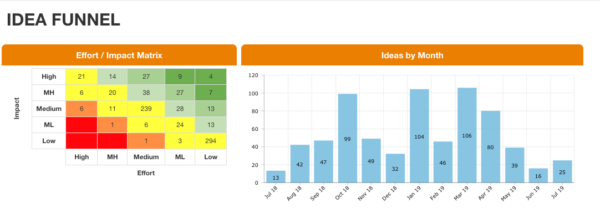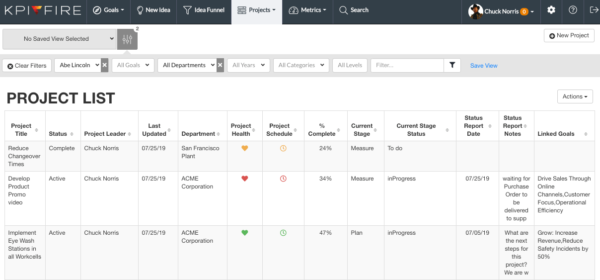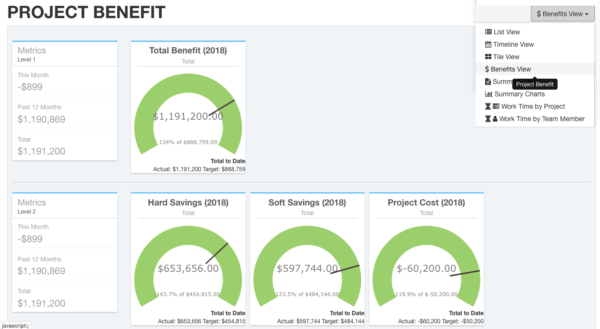If you don’t have a single source of truth for your Continuous Improvement program, you should be working toward that goal. According to Interact Source, 19.8 % of business time – the equivalent of one day per working week – is wasted by employees searching for information to do their job effectively.
According to Interact Source, 19.8 % of business time – the equivalent of one day per working week – is wasted by employees searching for information to do their job effectively. IDC data shows that “the knowledge worker spends about 2.5 hours per day, or roughly 30% of the workday, searching for information.
What are the Benefits of Having a Centralized System for Continuous Improvement programs?
Implementing a centralized system to manage a continuous improvement program can offer several significant benefits for organizations, including:
Improved Visibility and Alignment:
- Centralized data: A single platform provides a comprehensive view of all CI initiatives across departments, fostering transparency and facilitating communication.
- Strategic alignment: Organizations can ensure CI efforts align with overall business goals and objectives by tracking progress and identifying potential synergies between different programs.
Enhanced Collaboration and Knowledge Sharing:
- Improved communication: Centralized systems often offer communication tools that streamline information exchange between team members, fostering collaboration and knowledge sharing across departments and locations.
- Best practice dissemination: Successful practices and lessons learned from different CI initiatives can be easily captured, documented, and shared across the organization, accelerating learning and improvement.
Increased Efficiency and Effectiveness:
- Streamlined processes: Centralized systems can automate repetitive tasks associated with CI program management, such as data collection, reporting, and progress tracking, freeing up valuable resources for more strategic activities.
- Standardized procedures: Consistent workflows and standardized processes can be established across the organization, ensuring consistency and reducing the risk of errors or missed steps in CI initiatives.
Data-Driven Decision Making:
- Improved data quality: Centralized systems can help maintain data integrity and consistency, providing a reliable foundation for data-driven decision making related to CI efforts.
- Performance measurement: The ability to track and analyze data across different initiatives allows for a more comprehensive understanding of the program’s overall effectiveness and impact on organizational performance.
Additionally, a centralized CI system can:
- Promote a culture of continuous improvement: By providing a central platform for tracking progress and celebrating successes, the system can reinforce a culture of continuous improvement within the organization.
- Simplify compliance efforts: By maintaining centralized documentation and records, organizations can simplify compliance with relevant regulations and standards associated with CI programs.
Overall, implementing a centralized system for managing CI programs can lead to significant improvements in efficiency, effectiveness, and transparency, ultimately contributing to the organization’s long-term success.
Important Views to have in your Centralized System:
1. Summary Charts display the number of projects by Status, Health, and Schedule.
This report answers the question: How many CI projects are open right now in the West Region?
2. The List view:
Answers the question: Which projects is Chuck working on and are they on track?
From this report I can also see that “Chuck” has not provided a status report on the Changeover project this week”.
3) Savings View
Quickly see the impact of all of your projects. Filter or sort by Department, Year, Category, User, and more.
4. Idea / Effort Matrix & # of Project Ideas
With a single database for your Improvement Projects you can visualize data with the Impact vs Effort matrix and the bar chart showing Ideas created by month.









